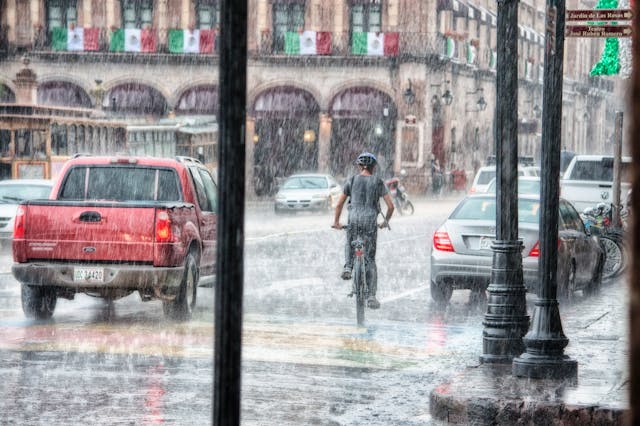
What are El Nino and La Nina? They are climate patterns that happen in the Pacific Ocean and affect weather all over the world. El Nino means “Little Boy” and La Nina means
All of the climate in the world is connected and changes in one place can lead to climate events in other places. That is one of the reasons why climate change brings more floods to some places and more droughts to others. There is no general world climate. A huge driver of climate is the climate over the Pacific Ocean. It is important because it is such a large body of water. The Pacific Ocean has twice the surface area of the Atlantic Ocean and more than twice as much water. It covers almost one-third of our planet’s surface. All of that water drives the climate in a cycle that goes like this. Cold water at the bottom of the Pacific Ocean rises towards the surface, warming up as it rises. The warm air at the top of the ocean evaporates into the air and is carried by the trade winds towards Asia. It falls as rain, back into the ocean and sinks to become cold. The warm rain brings the hot and humid climates most of Asia is known for. The cold water is pushed along until it rises to the surface to replace the warm water that has evaporated away. This motion of cold to hot and hot to cold drives the climate cycle but it also rives the currents in the oceans as well. This is the normal cycle. El Nino and La Nina change this.
When there is an El Nino, the trade winds lose a lot of their strength and the warm water heads east, towards the Americas, rather than West towards Asia. The trade winds are winds that circle the planet. There are four of them altogether and they go horizontally. The ones at the top, in the upper northern hemisphere and the bottom, in the lower southern hemisphere go eastwards. The two in the middle, on either side of the equator, go westwards. These winds are constant and they go in different directions because of the rotation of the Earth. It is because of the trade winds that go westwards that Europeans were able to sail to the Americas.
El Nino happens when the central and eastern surface of the Pacific Ocean warms up. It occurs every two to seven years, with no predictable pattern. It lasts for up to a year. The trade winds weaken and the warm water is pushed back east, in the opposite direction to usual, reversing the currents in the ocean. The waters are warmer in areas that are usually not warm and this hot water makes the Pacific jet stream shift south, which significantly alters the weather. It makes the northern US and Canada much drier and warmer, while bringing more rain and floods to the southeast. It affects rainfall and the weather in Asia as well, reducing the amount of rainfall in the monsoon.
There is another effect of the El Nino and that is on sea life. When the cold water rises to the top of the ocean, it brings up nutrients from the depths of the sea with it. Plankton depend on these nutrients and many animals in the sea depend on the plankton. The El Nino reverses the currents, which drastically reduces the amount of nutrients, which reduces the plankton, which reduces the sea life that depends on it. El Nino is caused by warming of the sea and climate change will make it much worse.
La Nina is the opposite to El Nino. The trade winds get much stronger than they usually are and they push far more warm water than usual towards Asia. This is great for the sea life because far more nutrients are driven to the surface by the ocean currents. However, it is not great for the land because the cold weather shifts the Polar jet stream north, which brings droughts in the southern US and heavy rains and flooding in the north US and Canada. Both El Nino and La Nina can make the hurricane season far worse, but they do so in different locations. Hurricanes are caused by the hot air over the ocean and this changes depending on if it is El Nino or La Nina. Right now, we are coming to the end of an El Nino. And this is what I learned today.
Photo by Genaro Servín: https://www.pexels.com/photo/person-riding-a-bicycle-during-rainy-day-763398/
Sources
https://kids.britannica.com/students/article/Pacific-Ocean/276242
https://www.usgs.gov/faqs/what-el-nino-and-what-are-its-effects
https://oceanservice.noaa.gov/facts/ninonina.html
https://oceanservice.noaa.gov/facts/upwelling.html
https://education.nationalgeographic.org/resource/el-nino
https://www.climate.gov/news-features/blogs/enso/rise-el-ni%C3%B1o-and-la-ni%C3%B1a
https://www.space.com/el-nino-la-nina-causes-effects-weather-explained
https://wellcome.org/news/explained-how-el-nino-impacts-health

[…] minutes. One of the ten plagues of Egypt was locusts, and that is not uncommon. They fly with the wind and eat everything living in their path. In 1954, a desert locust swarm in Kenya consumed over 200 […]